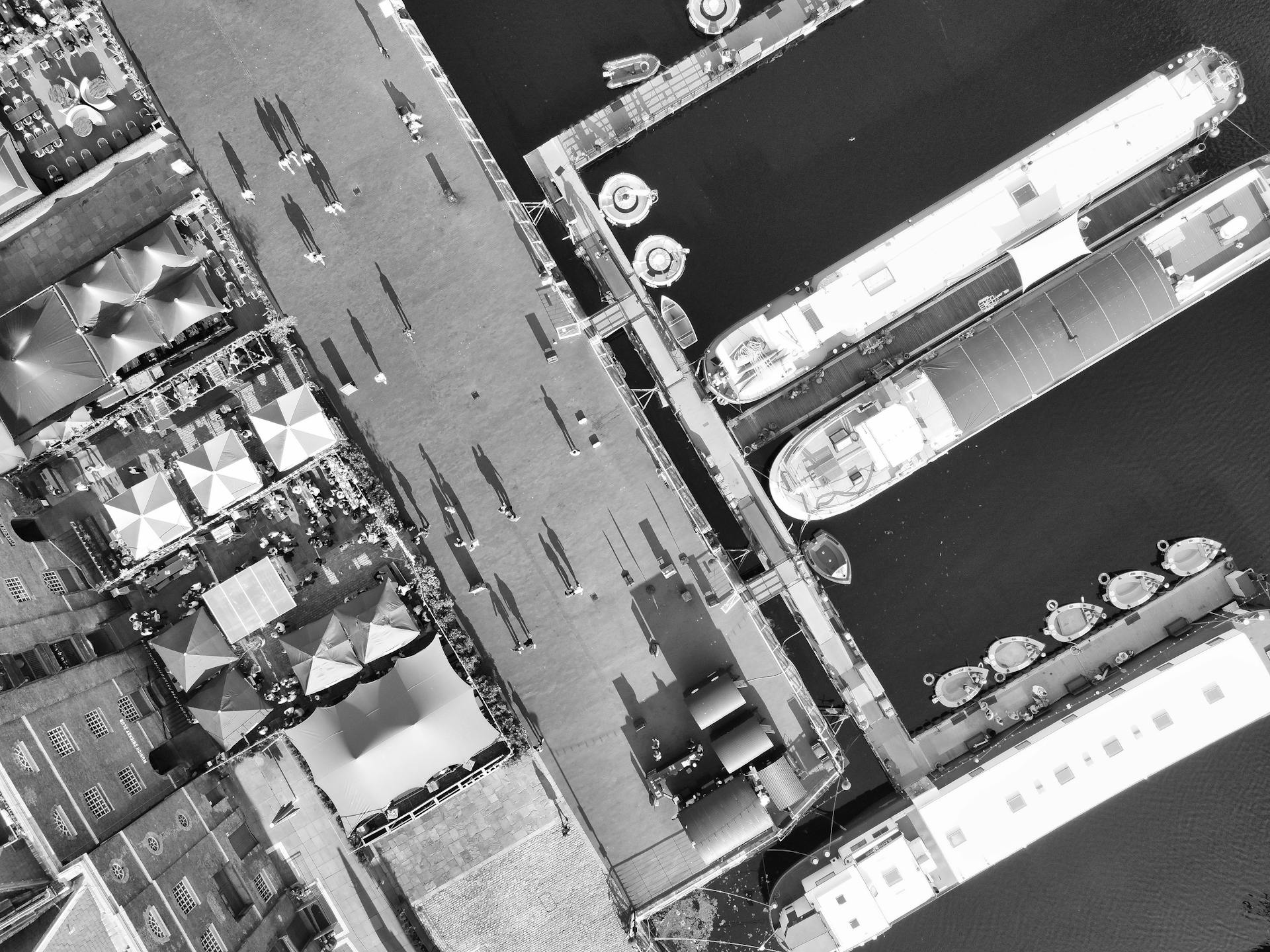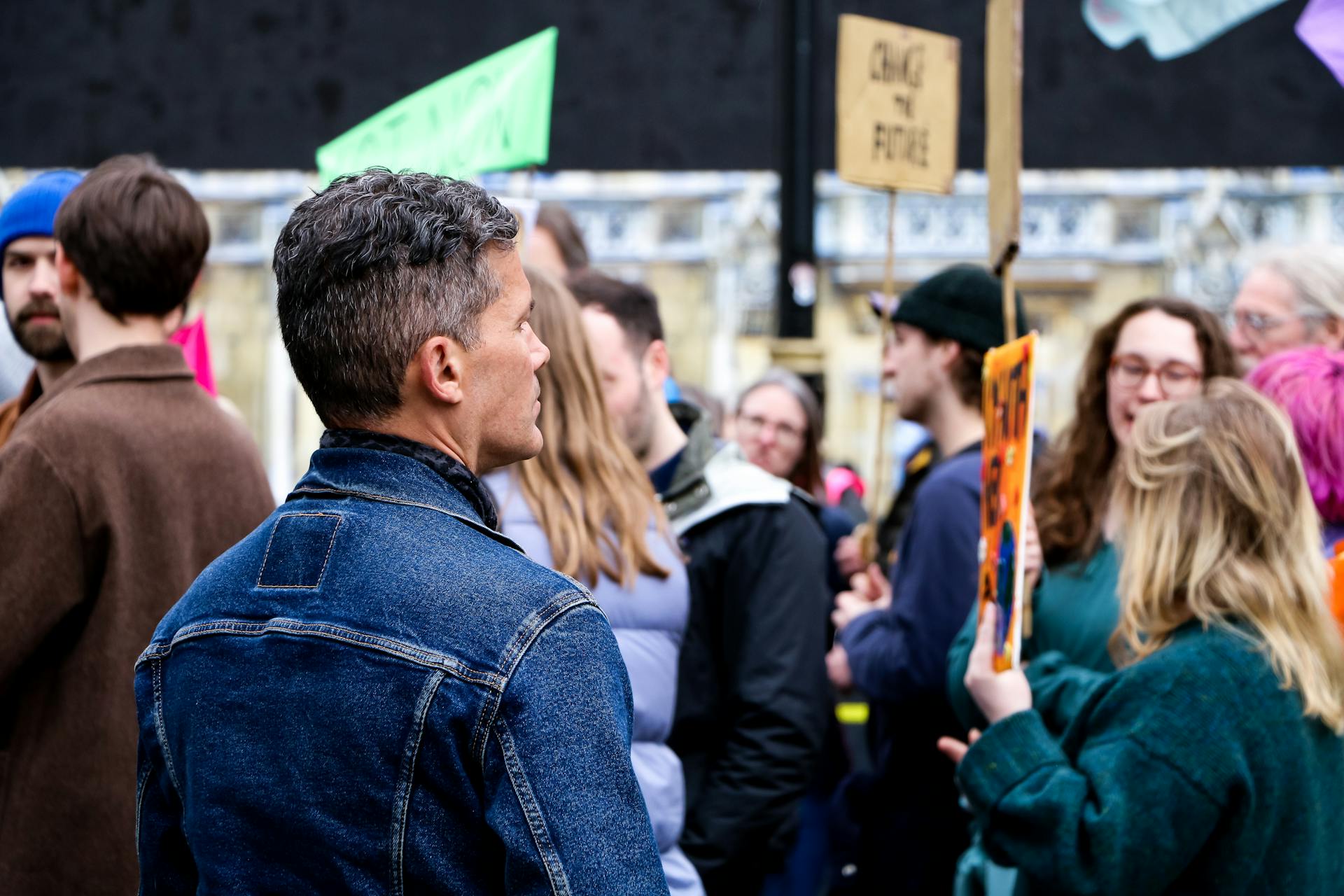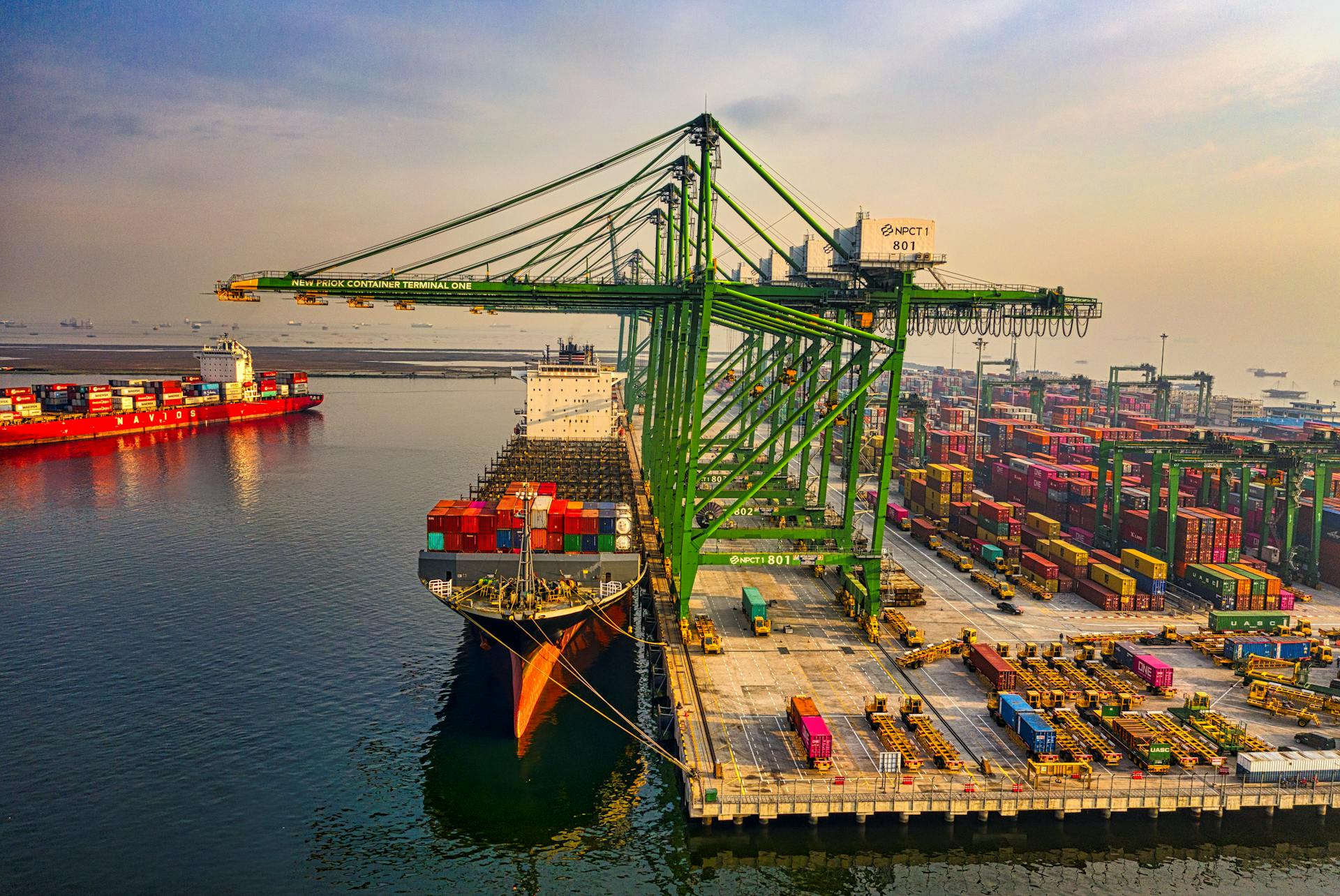
The 1889 London dock strike was a pivotal moment in labor history, marking a significant shift in the relationship between workers and employers. It was a turning point that would have far-reaching consequences for the labor movement.
The strike was sparked by a dispute over wages and working conditions, with dockworkers demanding better pay and a shorter working day. The dockworkers, who were mostly unskilled laborers, had been working long hours for low wages and were exhausted.
The strike gained momentum as more and more dockworkers joined the cause, with some estimates suggesting that up to 50,000 workers were involved. This was a massive show of solidarity, especially considering the time period.
Take a look at this: 1971 United Kingdom Postal Workers Strike
The Strike
The strike began on 12 August 1889, when dockers put demands on their employers for better pay and working conditions.
The men's demands were rejected, leading to a strike that involved over 75,000 men, including casual labourers, stevedores, and lightermen.
The strike was organised by the Dock, Wharf, Riverside and General Labourers' Union, led by union leaders such as Ben Tillett and John Burns.
The strikers forfeited their pay to strike, making donations to the cause vital to pay for food relief tickets.
The largest donation came from the Australian labour movement, which gave a massive £30,000 to the cause.
The strike brought London's ports to a standstill, with ships queuing and cargo turning bad, and profits dramatically decreased.
The strike lasted a month, ending on 15 September 1889, when the dockers received most of their demands, including the important 'docker's tanner'.
The Dockers' Leader
Ben Tillett, the dockers' leader, was born in Bristol in 1860 to an Irish mother and English father. He had 14 people living in his house when he was a child.
He started work in a brickyard at six years old and later ran away to join Old Joe Barker's Circus. At 13, his father forced him to enlist in the Royal Navy, where he learned to read and write.
A unique perspective: Old Dock

Tillett was a skilled orator who overcame a debilitating stammer to become one of the most celebrated speakers of his time. He drank whiskey mixed with raw eggs to preserve his voice.
As a union leader, Tillett was known for his fiery speeches, which often resulted in prosecutions for libel or sedition. He once questioned whether it was "murder to rise up and cut the throats of the rich".
Tillett was a fearless fighter who literally fought the fight. He was beaten up by company goons on several occasions, including having his nose broken, ribs cracked, and spleen ruptured.
Causes and Impact
The 1889 London dock strike was a pivotal event that had far-reaching consequences. It was sparked by a dispute over wages, which had been stagnant for years.
The dockworkers had been seeking a 10% increase in wages, but their employers refused to budge. This led to a massive strike, with over 20,000 workers walking off the job.
The strike had a significant impact on the British economy, with many ships delayed and imports disrupted.
Why Did the Dockers Strike?

The dockers' strike was a pivotal moment in Australian history, and understanding its causes is crucial to grasping its impact. The strike was sparked by the introduction of the 1907 Harvester Judgment, which led to a significant increase in the minimum wage for workers.
The Harvester Judgment, handed down by Justice Higgins, set the minimum wage at 7 shillings per day, a substantial increase from the previous rate. This change had a profound effect on the dockworkers, who were already struggling with low wages and poor working conditions.
The dockworkers' union, led by John McNeill, organized the strike in response to the Harvester Judgment, demanding better wages and working conditions. The strike was a bold move, but it was also a calculated one, as the union had been building support among the dockworkers for months.
The strike was not just about wages; it was also about the dignity and respect that workers deserved. The dockworkers were tired of being treated as second-class citizens, and they were determined to fight for their rights.
Dispute
The dispute that sparked the 1889 dock strike was over 'plus' money, a bonus paid to dockworkers for completing work quickly. This bonus was cut by the East and West India Docks Company to attract more ships to their docks.
The reduction in 'plus' rates was a significant issue for the dockworkers, who relied on this extra income to make ends meet. The general manager, Lieutenant Colonel John Lowther du Plat Taylor, made this decision to gain a competitive advantage over other docks.
The dockworkers were not happy with this change and saw it as a way to exploit them. They felt that their hard work and dedication were not being recognized or rewarded.
The dispute over 'plus' money was the initial cause of the strike, but it quickly grew into a broader movement for better pay, working conditions, and treatment.
Evaluations
Cardinal Manning's involvement in the Dock Strike was a pivotal moment, foreshadowing the Catholic Church's stance on labor rights two years later in Pope Leo XIII's encyclical Rerum novarum.
The Church's policy in Rerum novarum explicitly supported the right of labor to form unions, but rejected socialism and affirmed private property rights. This stance was a key aspect of the Church's response to the social and economic changes of the time.
The impact of Cardinal Manning's actions was not limited to the Church's policy; it also had a profound effect on individuals, including Hilaire Belloc, who was 19 years old at the time of the strike.
Suggestion: On Time Cross Docking
Legacy
The 1889 London dock strike was a pivotal moment in British trade union history, cementing the London Docklands' place at the heart of it. It was a landmark case of collective action by lower-skilled workers.
The strike instigated a huge growth in trade union membership, from 750,000 in 1888 to over 2 million in 1899. This growth had a lasting impact on the labor movement.
The quality of life for dockworkers improved notably after the strike, with better pay and more regular work. They didn't gain full job security until 1947, but the strike was a crucial step towards that goal.
The strike inspired the poem Red Flag, one of the most famous socialist anthems ever, sung at rallies and protests around the world. The poem's author, Jim Connell, was inspired to write it while attending a lecture during the strike.
Frequently Asked Questions
When was the Great Dock strike?
The Great Dock Strike occurred in 1889. This pivotal event was a response to the poor working conditions and low pay faced by unskilled dock workers.
When was the Dockers strike?
The London Dock Strike took place in 1889, marking a significant turning point in labor history. This pivotal event led to improved working conditions and pay for dockworkers.
Sources
- https://en.wikipedia.org/wiki/1889_London_dock_strike
- https://tribunemag.co.uk/2022/11/the-lessons-of-londons-great-dock-strike
- https://www.londonmuseum.org.uk/blog/the-1889-london-dockers-and-tailors-strikes/
- https://www.findmypast.com/blog/history/their-hunger-will-not-allow-them-to-continue-the-v
- https://poplarlondon.co.uk/great-dock-strike-london/
Featured Images: pexels.com


